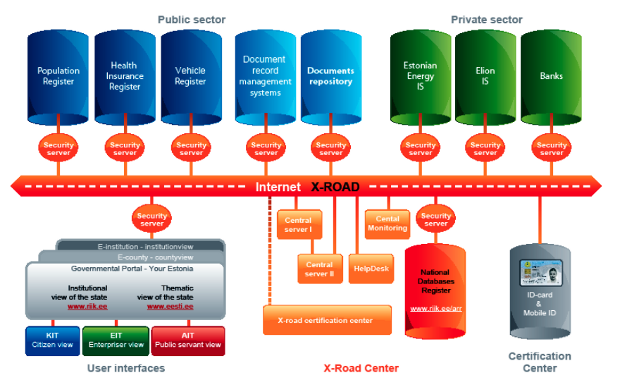'It has outlived its usefulness': The cross-border deal that sounds the death knell for physical signatures


Image: RIA
Digital cooperation took a major step forward in Europe recently following a new deal between Finland and Estonia.
Estonian Prime minister Andrus Ansip and his Finnish counterpart Jyrki Katainen inked what's thought to be the world's first cross-border agreement on the development of joint digitally-signed services last month.
In keeping with the theme of the agreement, both countries' prime ministers used their ID cards to sign the deal electronically. Katainen put his name to the memorandum of understanding in the Finnish capital of Helsinki while Ansip did likewise from the Estonian capital city Tallinn one day before the pair met in person in Helsinki.
The signing of the agreement means that from now on, Estonia and Finland will develop joint national data exchange platforms.
Such common platforms will mean that the two countries' citizens and organisations will only need to give their data once, and it can then be shared easily and securely across borders.
Outliving its usefulness
Under the current arrangements between the two countries, the system for companies operating in one that want to share information with government organisations in the other goes something like this: the company has to get in contact with the government body in their home country, ask that organisation for the data on paper, then a representative has to travel to the other country to submit the paper-based information to the equivalent government body there, where it's inputted into the relevant systems.
"This situation has certainly outlived its usefulness, especially in countries with advanced information and communication technologies such as Finland and Estonia," Ansip said at the meeting last month.
According to the Estonian prime minister, the main advantage of the switch to cross-border digital signatures is time-saving –individuals', entrepreneurs', officials', and even the PM's time. "Saving time also helps to save money. In Estonia, we save time worth a total of two percent of the annual gross domestic product by using digital signatures – that's equivalent to saving one week of working time per person," Ansip said.
The prime minister also hopes that the digitally-signed memorandum of understanding will also contribute to the economic relationship between Finland and Estonia. "There are about 4,500 Finnish companies in Estonia and about 3,500 Estonian companies in Finland – one can only imagine how much more effective the communication between the two countries will become thanks to digital signatures," Ansip added.
The implementation of the deal, and other cooperation on egovernment services, will be co-ordinated by Finnish ministry of finance and Estonia's Information Systems Authority, part of the ministry of economic affairs and communications.
Shared history
The two countries have a history of working on joint IT projects: the latest version of Estonia's ID card software now also supports ID cards from Finland, for example. As a result, Estonian and Finnish authorities can exchange information, while companies and people in both countries can sign contracts and exchange other documents using the digital signatures associated with the cards, now valid for official paperwork in both countries.
The plan to extend egovernment cooperation between the countries first hit the headlines in September when Riku Jylhänkangas, the head of Finland's public sector ICT strategy, revealed that Finland was planning to study Estonia's government middleware layer X-Road to inform the creation of its own system, intended to improve public service delivery and cut costs.
X-Road was launched in Estonia in 2001, and enables secure internet-based data exchange between government agencies' various IT systems, as well as giving individuals access to any of their data maintained and processed in public sector databases.
Both public and private sector organisations can connect their own IT systems with X-Road too - for example, local banks can use X-Road's digital ID card to verify the identity of their customers.
The first common Finnish and Estonian online services will be underpinned by the introduction of the X-Road-like solution in Finland, with the initial pilot projects set to be completed by 2014.
But why is Estonia giving Finland the whole X-Road system for free?
"You can see it in some ways as an old debt we had to pay because when we first started to develop our ID-card concept over ten years ago, we had to borrow a lot from the Finnish system," Taavi Kotka, the deputy secretary general for communication and state information systems, told Estonia's Public Broadcasting News.
Kotka highlighted that X-Road's data exchange layer could also find a place in other countries across the continent. "It would make European cyberspace a lot safer. Today there isn't much regulation or rules in the ways that information is exchanged, but with X-Road the process would be much more consistent, systematic and a lot safer of course."
He admitted that in the next few years it's unlikely the system will be deployed around Europe. "A lot of countries including Germany have a different architecture and a different understanding of privacy and safety. The European Commission is looking for a unified vision. It will not happen in the next few years but we are working on it," he said.